25 Jun, 2017
In the context of Goa’s Monsoon Festivals, the Chorao Biodiversity Management Committee (BMC) organized at the Shri Vishnu Devastan a festival to showcase Chorao’s formidable biodiversity. The event took place under the umbrella of the CMPA project, with support from The Energy and Resources Institute (TERI).

The audience follows with appreciation the festival's cultural program
The festival’s program featured an interesting mix of lectures and a cultural program The BMC had also used this opportunity to launch a drawing competition to institute a logo for the Chorao Biodiversity Management Committee and a prize was awarded to the winner. Another focus of the event centered on traditional medicine. Four traditional medicine healers of the village were commended for keeping alive the traditional knowledge on medicinal plant diversity, and the associated cultural legacy of the village. At the end, medicinal plants were distributed to members of the audience.
The Member Secretary of the Goa State Biodiversity Board, Mr. Pradip Sarmokadam, spoke on the importance of biodiversity and the need to document this diversity and traditional forms of its use. Dr. Aaron Lobo, Technical Adviser for the CMPA project, informed the audience of the various achievements of the CMPA project in Chorao.
TERI reported on the progress in the preparation of the People’s Biodiversity Register (PBR) and the awareness and capacity building activities.
Interspersing the speeches were traditional cultural performances by members of the village, such as songs that describe the beauty and natural wealth of the village. The dhalo song is part of a folk dance that is traditionally performed by women belonging to tribal communities including the Gawdas, Naiks, and the Dessais. The Earth is the chief deity who is praised and whose glory is sung. The song seeks for her appeasement and hailing, to give rise to her blossoming and fruition through this ritual. The fugdi is another type of traditional folk song that has been passed down orally through generations. It reflects love for nature, showing a harmonious relationship between men and nature. The program was concluded with a ghumat arati. The ghumat is a traditional percussion instrument of Goa, originally consisting of the skin of the gar (monitor lizard) stretched over an earthenware pot. Nowadays, the skin has been replaced by the legally permitted sheepskin. The ghumat arati was performed by men of the Chorao village, singing traditional religious compositions.
Both wild and domesticated fruits, vegetables, flowers, edible and medicinal plants, rice and other seed varieties were on display throughout the event. Appreciation of the enthusiasm of the BMC members, students, and other village members in organizing this event was widely expressed by the officials present.
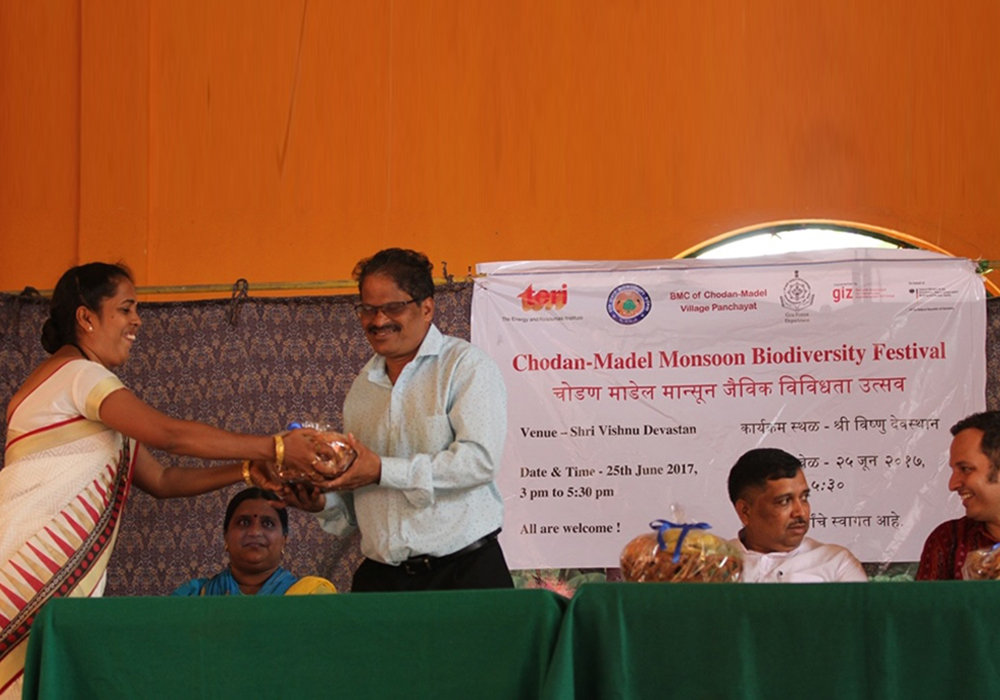
The chairperson of the Biodiversity Management Committee presents a locally grown fruit as a gift to the Sarpanch of the Chorao Village

Dr. Aaron S. Lobo, Technical Adviser, GIZ, gives some insight into the work of the CMPA Project

Mr. Pradip Sarmokadam, Member Secretary, Goa State Biodiversity Board, felicitates the awardee for the best logo selected for the Chorao Biodiversity Management Committee
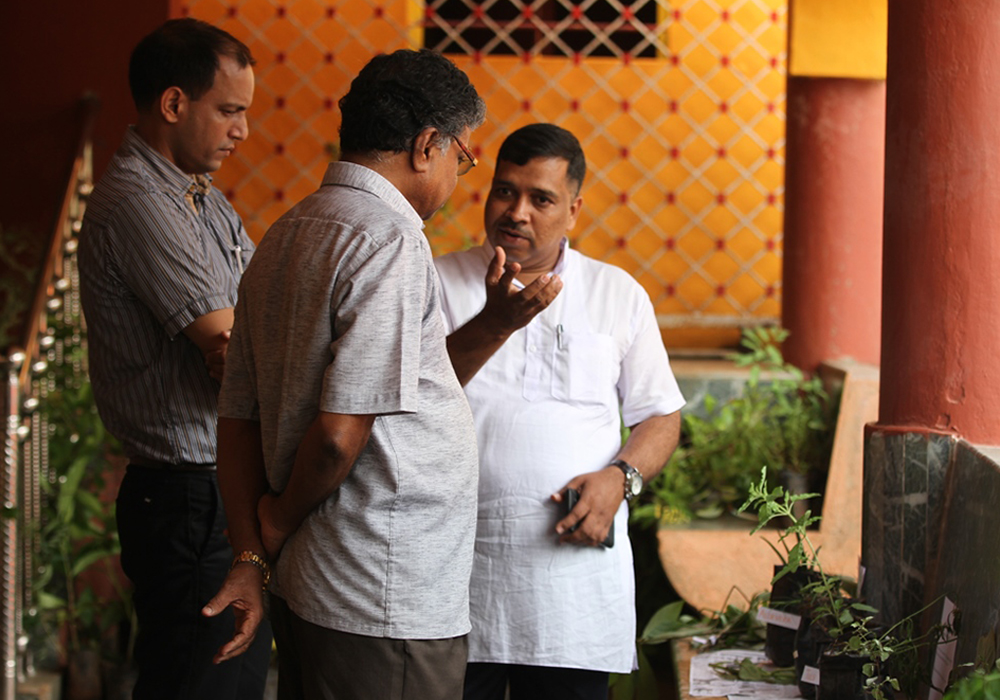
Officials viewing and discussing the diversity of plants on display
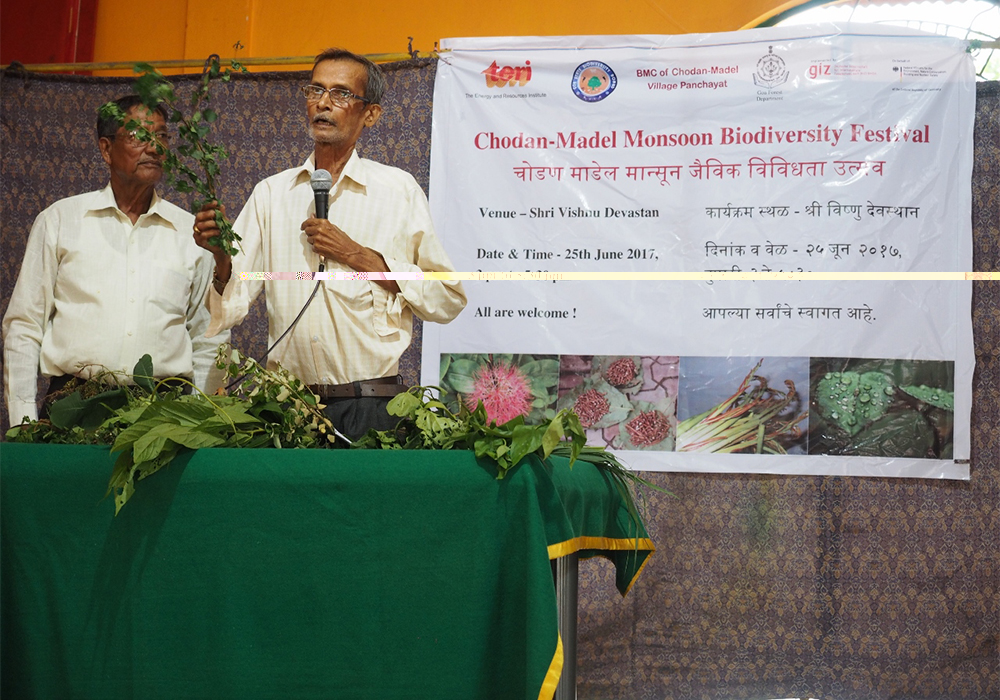
Traditional healer Mr. Mukhund Khandeparkar discusses the uses of locally available wild herbs to treat common ailments
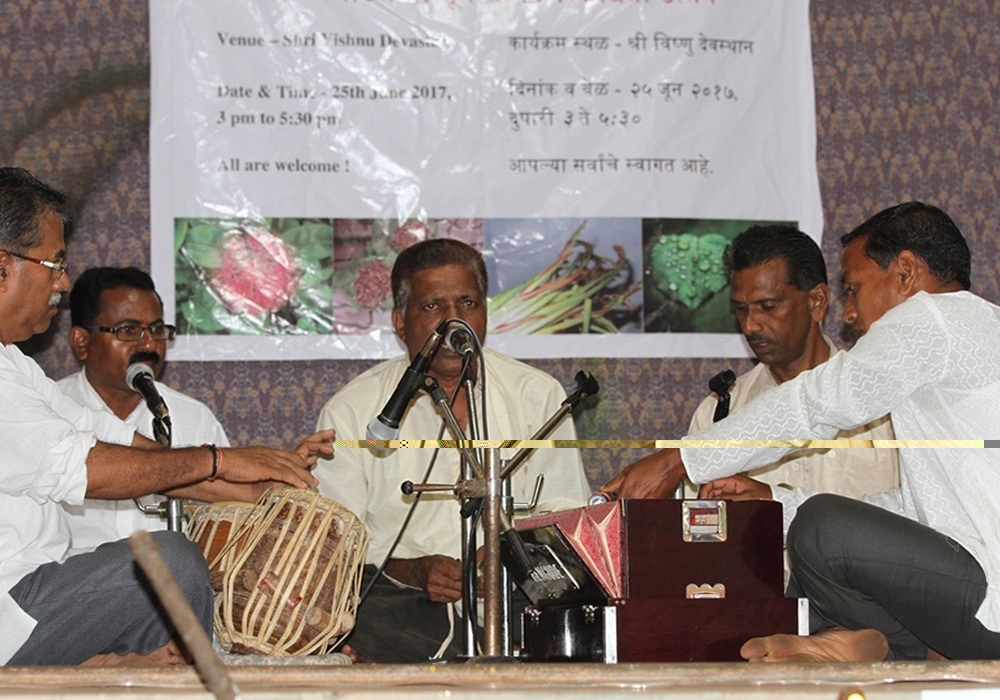
Local musicians performed the Ghumat Arathi
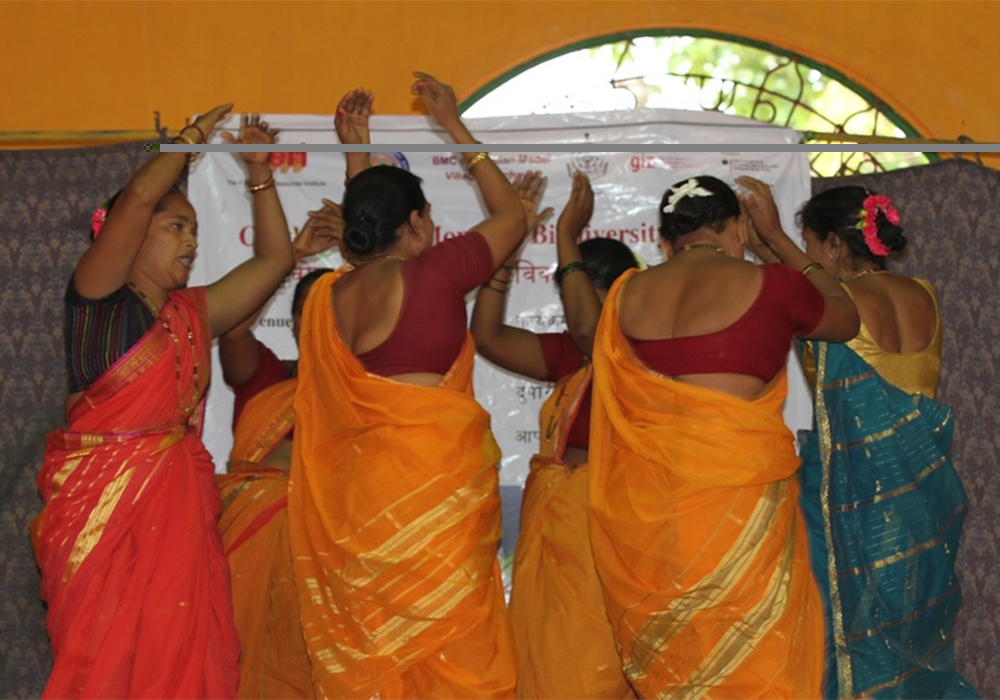
Villagers performing the Fugdi, a traditional dance
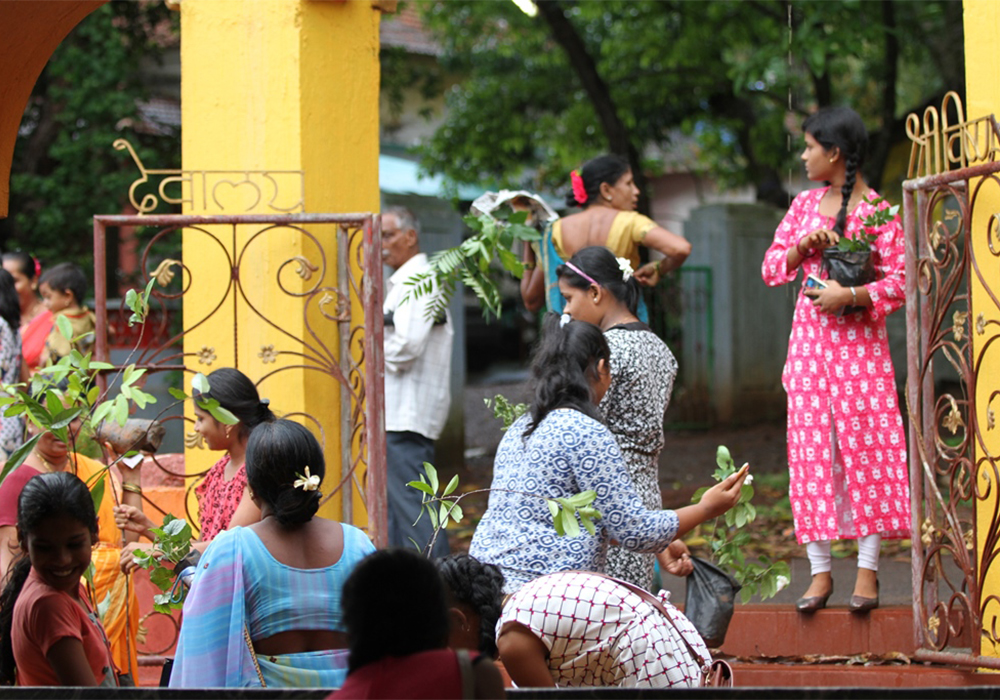
Medicinal plants were distributed to the audience
© 2014 IGBP. All Rights Reserved.
Site By: Virtualpages
